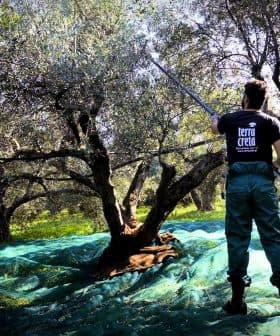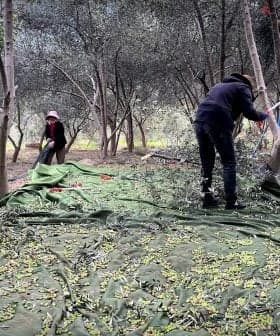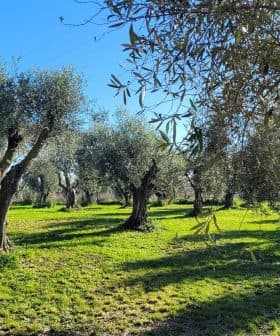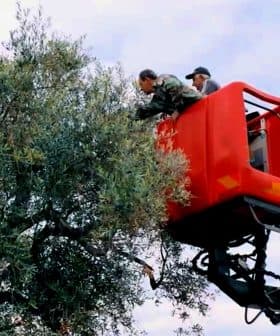 9.7K reads
9.7K readsNews Briefs
Production in Spain Expected to Fall Short of Initial Estimates

The 2023/24 olive oil crop year in Spain has met expectations, with an estimated production of 755,000 tons, although some experts doubt this figure due to lower-than-expected oil yields from olives. The record-low yield of the previous year has been surpassed, but prices have increased significantly, leading to decreased sales both domestically and abroad, with consumers buying smaller quantities in response to the high prices.
According to a preliminary estimate from Spain’s Cooperativas Agro-alimentarias, the 2023/24 crop year has met expectations, albeit narrowly.
In a market bulletin published at the end of December, the county’s leading agricultural union estimated that production would rise to 755,000 tons by the end of the current harvest.
In my opinion, we will achieve around 680,000 tons or 710,000 tons at best. Since we are already in January, adding 100,000 more tons to the amount already harvested is very difficult.
However, the latest figure is below the 766,362 tons Spain’s Ministry of Agriculture, Fisheries and Food predicted in October.
Despite the promising forecast, some experts doubt production will reach 755,000 tons due to unexpectedly low oil yields from olives that have already been milled.
See Also:2023 Harvest UpdatesIn a recent opinion column, César Lumbreras, the director of the agricultural news publication Agropopular, wrote that “the olive oil yield is lower than expected, so it will be difficult to achieve a final production of 700,000 tons.”
According to Lumbreras, Spanish olive oil yields are “greatly affected by drought and lack of water, and would require rain throughout the winter and spring for the trees to recover from the water stress situation, which they have suffered during the last two seasons.”
Approximately 70 percent of the country’s olive groves are not irrigated.
Juan Vilar, the chief executive of agriculture and olive oil consultancy Vilcon, also doubts that production will reach 755,000 tons.
He told the Olive Oil Times that since the olive harvesting and milling campaign was almost complete, it was highly unlikely that Spain would achieve such high yields.
“In my opinion, we will achieve around 680,000 tons or 710,000 tons at best,” Vilar said. “Since we are already in January, adding 100,000 more tons to the amount already harvested is very difficult.”
“The total production already harvested, up to now, is under 600,000 tons,” he added. “If we have to achieve 755,000 tons, we need at least 150,000 tons this January, and the month is almost over. About 85 percent of farmers have already finished harvesting.”
Regardless of how the 2023/24 harvest finishes, it will surpass the record-low yield of the previous crop year, when Spain produced 664,033 tons.
The slight production rebound is primarily due to the effects of the Iberian peninsula’s historic drought being somewhat mitigated by rain.
However, large olive oil-producing regions, including Andalusia and Castilla-la-Mancha, with estimates of 550,600 tons and 86,000 tons in October, have fallen short by 30 and 23 percent, respectively.
Although not all harvest data has been counted for these regions, the current estimates are discouraging. As of January 2024, according to the Ministry of Agriculture, Fisheries and Food, the total harvest counted was 584,780 tons.
“We will have a better picture in February once the remaining 15 percent of farmers have completed their harvest,” Vilar said. “However, we will achieve no more than 720,000 tons.”
The reasons for the two consecutive below-average harvests are due to Spain’s unprecedented drought and high temperatures in May, which damaged many olive trees at the time of blossoming and resulted in them not bearing any fruit.
“Due to the drought, the olive fruit produced this season is 2.5 percent less in size than the global average,” Vilar said. “This year, all 66 olive-growing countries have been affected. While Spain has seen its fruit shrink by 2.5 percent, Tunisia and Portugal have seen a 1.6 percent and 1.5 percent reduction, respectively.”
In the market, low yields have hit prices hard. The price of olive oil at retail in Spain registered an increase of almost 55 percent in 2023 compared to the previous year, according to consumer price index data from Spain’s National Institute of Statistics.
Separate data from NielsenIQ found that price increases in 2023 were distinct for different grades of olive oil, with the price for extra virgin, virgin and non-virgin olive oils rising by 79, 69 and 60 percent, respectively. (The overall average was brought down due to the far more modest olive pomace oil price rises)
“The price of olive oil is very high, and this upward trend will continue for a few months,” Vilar said. “There are three main reasons: The first is that production is low. The second is the weather. Unless it improves with more rain, prices will not change. Thirdly, the prices in the supermarket are from the last batch from the farm.”
“Olive oil arrives at the supermarket from its origin in lots or batches, and the price has already been set at €9,” he added. “Therefore, prices will not change until the batch is finished.”
In other words, prices at the origin are affected by the olive oil stocks, the progress of the harvest and how reality compares to expectations and weather forecasts.
Meanwhile, retail prices reflect the origin prices when the purchase orders were made, plus whatever margin is added by bottlers, wholesalers and retailers along with Value-Added tax.
“Olive oil sales in the domestic market have fallen significantly due to the increase in prices to consumers,” Lumbreras wrote. “Likewise, sales abroad have decreased for the same reason. We are, therefore, facing difficult months in the olive sector.”
Vilar agreed that higher prices have affected consumers. “This has changed buyer behavior,” he said. “Consumption has declined by 47 percent. Spanish customers are still buying, but now in smaller quantities and smaller bottles. They buy weekly instead of monthly.”
Some speculators have suggested that the Ministry of Agriculture, Fisheries and Food’s higher forecast may be a way for the ministry to boost consumer optimism while reducing domestic market prices.
At a recent event, Luis Planas, the agriculture minister, urged “producers to maintain their efforts, and marketers to build consumer loyalty and maintain stable prices so that consumers do not stop demanding olive oil.”









